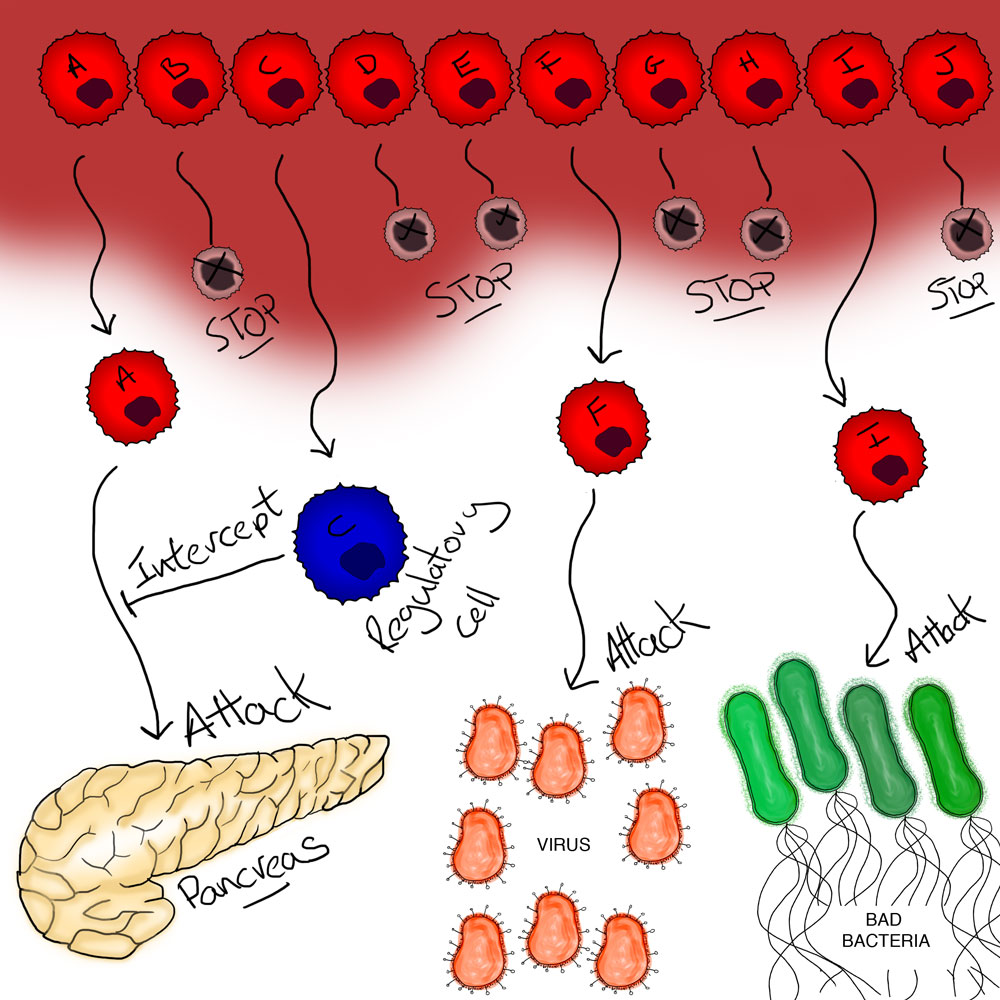-
LAB WEBSITE OF PROF. LUCY WALKER
University College London (UCL)
Institute of Immunity and Transplantation
Royal Free Hospital
Hampstead
London
NW3 2PF
LAY INTEREST
We are keen to communicate our research to a wider audience. See below for a brief explanation of how the immune system works.
Your Immune System and Why it Might Go Wrong - Dr Rupert Kenefeck
The immune system consists of a complex network of cells whose job it is to protect your body from infectious diseases such as bacteria and viruses. There are two main arms of your immune system called the innate and adaptive. The innate system responds quickly and is your front line defence providing a broad protective service. The adaptive arm of the immune system is slower to respond but is more targeted and aggressive and has the important characteristic of memory. Memory means that the next time a threat is seen the adaptive side of your immune system is fast and potent - able to destroy a threat before you were even aware you were infected. The principle of memory is how vaccination works. A vaccine shows a safe version of the threat (a small bit of virus protein or a smashed up soup of bacteria) to the immune system to generate memory cells; if the real threat is ever encountered the adaptive immune system jumps on it before it can get established.
The difficulty the adaptive immune system has is that it must be able to recognise and assess a potential threat. Although this may sound simple it is acutally a huge undertaking; there are new viruses/bacteria evolving every day that your immune system has never seen before or been educated about. How is it supposed to know what is dangerous and what is part of your body?
Evolution's solution to this is a remarkable system which has developed in such a way that it can theoretically recognise any protein (a major part of all living things - including you). Millions upon millions of cells are produced which each individually have a randomly generated specificity - meaning they could recognise any tiny bit of protein from the capsule of a virus to the hair follicle of a Lion-tailed Macaque (these cells are represented by the 10 cells A-J on this diagram).

The problem with this system however is that it inevitably also generates cells specific for proteins which make every part of us (auto-reactive cells). These cells if left unchecked have the potential to cause autoimmune disease, and so before being let loose to patrol the body they are first checked by an organ called the Thymus to see if they recognise self-proteins. If they do they are destroyed (as shown by cells B,D,E,G,H and J in the diagram). Non-self reactive cells are allowed to live and join the circulation (cells F and I). These cells will form part of your immune system and will protect against bacteria and viruses. The process of deletion, although good, is not 100% effective; it is normal that some self-reactive cells enter the circulation (A and C in the diagram). Some of these cells will develop into regulatory cells (cell C) and serve to prevent immune responses against host tissues whereas others, if left unchecked (or unregulated), have the ability to cause auto-immune disease (cell A).
Cell A represents a cell which is capable of causing autoimmune diabetes; interestingly the entire population has a version of this cell in their circulation. The thing which differentiates those people who get diabetes from those who don't is immune regulation. The complex interplay between these types of cells and the mechanisms of regulation put in place to prevent cells such as this from causing autoimmunity are of great interest to us. If we can understand these processes we can manipulate them and hopefully prevent autoimmunity occurring.
